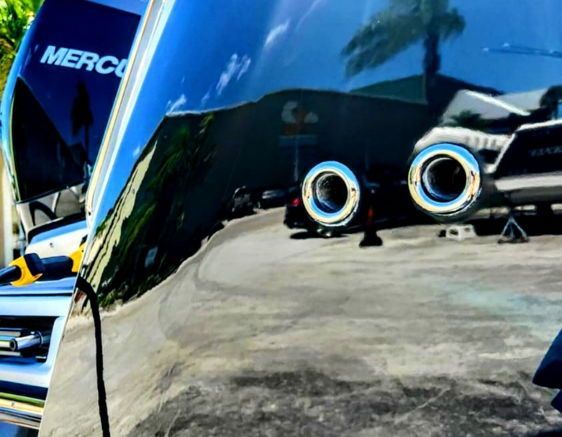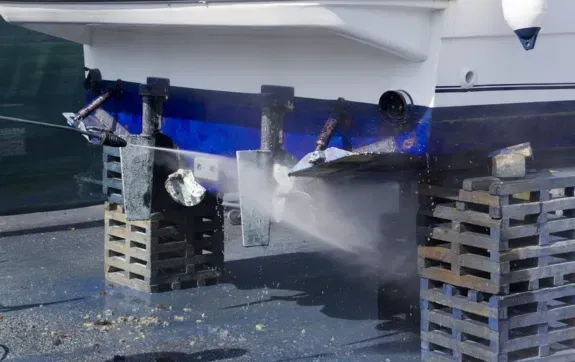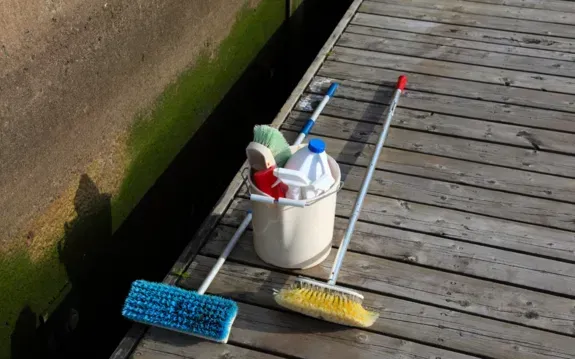September 2, 2024
Taking your boat or yacht out on the open ocean is a thrilling experience, but saltwater can take a toll on your vessel if it’s not properly maintained. Detailing your boat before and after a saltwater trip is essential to protect it from corrosive elements, preserve its appearance, and ensure it runs smoothly. At Treasure Coast Boat and Yacht Detailing , we specialize in comprehensive detailing services that prepare your boat for saltwater adventures and keep it looking pristine afterward. In this blog, we’ll explore the best practices for detailing your boat before and after a saltwater excursion. Before the Trip: Preparing Your Boat for Saltwater Exposure Preparing your boat for a saltwater trip involves more than just stocking up on supplies. Proper detailing beforehand can help protect your vessel from saltwater damage and make cleaning easier when you return. 1. Apply a Protective Wax or Sealant One of the most important steps you can take before a saltwater trip is to apply a high-quality wax or sealant to your boat’s hull. Waxing provides a protective barrier that repels water, prevents salt from sticking, and reduces the risk of oxidation. How We Help: At Treasure Coast Boat and Yacht Detailing, we offer professional waxing and polishing services that protect your boat's exterior surfaces. Our marine-grade waxes are designed to withstand harsh saltwater conditions, keeping your hull smooth and shiny. 2. Clean and Protect Vinyl and Upholstery Saltwater, UV rays, and the elements can quickly damage your boat’s interior surfaces, particularly vinyl seats and upholstery. Cleaning and applying a UV-protectant treatment before your trip can prevent cracking, fading, and mildew growth. How We Help: Our interior detailing services include thorough cleaning and conditioning of vinyl, upholstery, and other surfaces. We use specialized products that protect against salt, sun, and moisture, ensuring your interior stays in top shape. 3. Inspect and Protect Metal Surfaces Metal fittings, railings, and hardware are especially vulnerable to corrosion from saltwater exposure. Before heading out, ensure all metal surfaces are cleaned and coated with a corrosion inhibitor or protective polish. How We Help: Treasure Coast Boat and Yacht Detailing offers metal polishing and protection services to safeguard your boat’s metal components. Our anti-corrosion treatments help prevent rust and keep your fittings gleaming. 4. Check and Seal All Windows and Hatches Ensure all windows, hatches, and seals are watertight before heading into saltwater. Leaks can lead to water intrusion, causing damage to the interior and electronics. How We Help: As part of our detailing services, we inspect and clean all seals, windows, and hatches, ensuring your boat is protected from water ingress during your trip. After the Trip: Detailing Your Boat to Remove Salt Residue After enjoying your saltwater adventure, it's crucial to thoroughly clean and detail your boat to remove salt residue and prevent long-term damage. Here are the key steps to follow: 1. Rinse the Entire Boat with Fresh Water Immediately after returning from a saltwater trip, rinse your entire boat with fresh water. Focus on all areas, including the hull, deck, engines, and hard-to-reach spots where salt can accumulate. Saltwater left on surfaces can cause corrosion, discoloration, and damage over time. How We Help: Our professional rinse-down services ensure that all traces of salt are removed from your boat. We use high-pressure, fresh-water rinses to clean every part of your vessel, from bow to stern. 2. Wash with a Marine-Safe Soap After rinsing, wash your boat with a marine-safe soap that’s designed to break down salt and other contaminants. Avoid using household detergents that can strip protective wax and damage surfaces. How We Help: Treasure Coast Boat and Yacht Detailing uses specialized marine soaps that effectively remove salt, grime, and contaminants without harming your boat’s finish. Our wash services ensure a spotless and protected surface. 3. Inspect and Clean the Engine and Mechanical Parts Saltwater can wreak havoc on your boat’s engine and mechanical systems if not properly rinsed and maintained. Flush the engine with fresh water and inspect all components for salt buildup or corrosion. How We Help: We offer engine detailing and flush services that remove salt from critical engine parts, reducing the risk of corrosion and maintaining peak performance. 4. Polish and Protect Metal Surfaces Again Saltwater can dull and corrode metal fittings quickly. After washing, reapply a protective polish to all metal surfaces to restore shine and provide continued protection against rust. How We Help: Our metal polishing services use advanced products that protect your boat’s metal fittings, railings, and cleats from future corrosion, keeping them looking new. 5. Condition Vinyl and Upholstery Post-Trip After your saltwater outing, clean and re-condition all vinyl and upholstery surfaces. This helps remove any salt residue and reapply UV and moisture protection to prevent long-term damage. How We Help: Treasure Coast Boat and Yacht Detailing provides interior reconditioning services that remove salt and restore the look and feel of your boat’s seats and upholstery, ensuring they remain in top condition. Conclusion Detailing your boat before and after a saltwater trip is essential for maintaining its appearance, performance, and longevity. At Treasure Coast Boat and Yacht Detailing , we offer a comprehensive range of detailing services tailored to protect your boat against the harsh effects of saltwater. From waxing and polishing to engine flushes and upholstery care, our team of experts has you covered. Contact us today to schedule your pre- and post-trip detailing services and keep your boat in excellent condition for every saltwater adventure.









